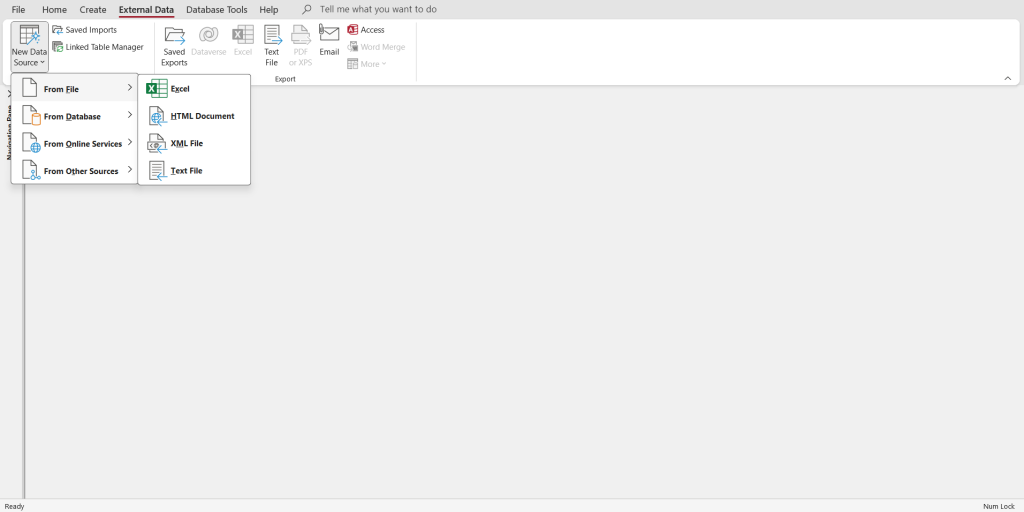How to Import Excel Data into Microsoft Access Database
Microsoft Access is a powerful tool for managing data, especially for small to medium-sized businesses. One of its key features is the ability to seamlessly integrate with other Microsoft Office products, such as Excel. If you have large amounts of data stored in Excel and want to harness the power of Access for more advanced reporting, querying, and database management, you can easily import your Excel data into an Access database.
In this guide, we’ll walk you through the step-by-step process of importing Excel data into Microsoft Access.
Why Import Excel Data into Access?
Before diving into the steps, let’s understand why importing Excel data into Access is beneficial:
- Data Management: Access allows you to organize, search, and manipulate data more effectively than Excel. For example, running complex queries or generating reports is much easier in Access.
- Relational Databases: Unlike Excel, Access is a relational database, meaning it can handle multiple tables that are related to each other. This is ideal for tracking different data sets that interact, like customers, orders, and products.
- Efficiency: If you’re managing a large amount of data, Access can handle more complex operations and larger datasets than Excel, which can become slow or cumbersome with large files.
Now, let’s look at the step-by-step process.

Step-by-Step Guide to Import Excel Data into Access
Step 1: Prepare Your Excel Data
Before importing, ensure your Excel data is organized correctly:
- Format your headers: Make sure the first row of your Excel sheet contains unique, descriptive column headers. These headers will become the field names in Access.
- Check for errors: Clean your Excel data by removing any errors, such as blank rows or columns, inconsistent data types, or incorrect entries.
- Save your file: Ensure your Excel file is saved in a compatible format. Microsoft Access supports
.xlsx,.xls, and.csvformats.
Step 2: Open Microsoft Access
Once your Excel data is ready:
- Launch Microsoft Access.
- Open an existing database or create a new one where you will import the data.
Step 3: Start the Import Process
- Go to the “External Data” tab at the top of your Access window.
- Click on the “New Data Source” button, then select “From File” and choose “Excel.”
- A dialog box will appear prompting you to browse for your Excel file. Find and select the file you want to import.
Step 4: Choose Import Method
In the dialog box, you’ll be given three options:
- Import the source data into a new table in the current database.
- Append a copy of the records to an existing table.
- Link the data source by creating a linked table.
For most users, choosing the first option — Importing the data into a new table — is ideal. However, if you already have a table in Access that matches the structure of your Excel data, you can choose to append the data to an existing table.
Step 5: Map Fields and Configure Options
- Preview the data: You’ll be shown a preview of the Excel data you’re importing.
- Field mapping: Ensure that the field names in Access align with your Excel column headers. You can rename fields or change data types here if necessary.
- Set a Primary Key: Access may ask you to specify a primary key. This is a unique identifier for each record (row) in your data. You can allow Access to create one for you or choose an existing field from your Excel data.
Step 6: Complete the Import
Once you’ve configured your import settings:
- Click Finish to complete the import process.
- Access will display a dialog box asking if you want to save the import steps for future use. This can be helpful if you regularly import data from Excel to Access.
Step 7: Verify Imported Data
After the import is complete:
- Open the newly created table in Access.
- Review the data to ensure it has been imported correctly and completely. Double-check that field types and data integrity are maintained.
Common Issues and Troubleshooting
Here are some common problems that may arise during the import process and how to solve them:
- Data type mismatch: If Access is showing errors after import, check that the data types in your Excel sheet match the types in Access (e.g., numeric values should be imported into number fields).
- Missing data: If certain rows or columns didn’t import, it could be due to blank or improperly formatted cells in Excel.
- Duplicate records: To avoid importing duplicate data, make sure your Excel data is clean and free of any unintended repeated entries.
Best Practices for Importing Excel Data into Access
To ensure a smooth import process, follow these best practices:
- Keep it simple: Limit your Excel file to one sheet if possible, and make sure it’s formatted consistently.
- Backup your data: Always keep a copy of your original Excel file before importing into Access.
- Use Access queries: After importing, take advantage of Access’s querying capabilities to filter, sort, and manipulate your data efficiently.
Final Thoughts
By importing your Excel data into Microsoft Access, you can unlock a range of powerful database management features that Excel alone cannot offer. Whether you’re working with large datasets, performing advanced queries, or creating detailed reports, Access provides the tools to help you better manage your data.
If you need professional assistance with setting up or optimizing your Access database, our team at AccessDeveloper.net can help. We specialize in Microsoft Access solutions, including database consulting, custom development, and troubleshooting.
Contact us today to learn more about how we can help you with your data management needs.
